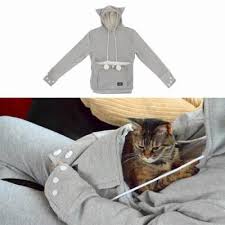Don't Get Rid of the Dog If You're Expecting!
Michael Wombacher, Good Dog, Happy Baby
 It's no doubt our dogs love us, but what about any new household members? If you're a dog owner and expecting a baby, you might have concerns. Can your dog adjust to not being your one and only? Is it possible for your dog to love a new baby - or at least tolerate the bundle of joy? Yes, and you don't have to get rid of the dog!
It's no doubt our dogs love us, but what about any new household members? If you're a dog owner and expecting a baby, you might have concerns. Can your dog adjust to not being your one and only? Is it possible for your dog to love a new baby - or at least tolerate the bundle of joy? Yes, and you don't have to get rid of the dog!
If you are expecting a baby, don't wait until the baby arrives before making changes with your dog. Jealousy can be a big concern, so you want to head it off before it starts.
To do this, think about the changes that are going to happen in your dog's life when the baby arrives. The amount of time you spend with your dog is going to change and perhaps he is going to be off limits to certain rooms in the house or no longer allowed on the bed or couch.
As soon as you find out you are having a baby, start introducing those changes to your dog, long before the baby arrives. Dogs aren't stupid, if you wait until the baby is here, they are going to make a connection that the baby is not their friend and things changed when the baby arrived. If you do it ahead of time, they will already be used to the new changes and won't take a dim view of the newcomer.
In his book, Good Dog, Happy Baby, Michael Wombacher has committed the first third to Rank Management, or the Doggy 12-Step Program. Michael didn't invent the program, but he says it has twelve simple steps you can make sure that your dog's relationship with you is structured appropriately in such a way that the dog understands who's the boss and who's running the show and who's structuring the social situation. If your dog looks at you that way, it's not difficult to bring a newcomer into the home, whether it's a baby or another animal, because your dog will be looking to you for cues about the social interaction.
 Unfortunately, this structure is not in place with many dog owners, which can lead to a co-dependency developing between dogs and people, eventually turning into problems. But it doesn't have to be like that and there are many things you can do.
Unfortunately, this structure is not in place with many dog owners, which can lead to a co-dependency developing between dogs and people, eventually turning into problems. But it doesn't have to be like that and there are many things you can do.
If you have always treated your dog like your baby, don't worry; you can still spoil your dog without spoiling the relationship. You can structure it in such a way that the dog will associate the love, the affection and attention and the babying that he has been getting from you with the presence of the child.
For example, when the baby goes down for a nap, most people have a tendency to then lavish all of the attention to their dog, because they now have the time. This is not good. This will teach the dog that when the baby is around, no one loves him, but when the baby is gone, everything is good again. So, when the baby is down, put the dog down too in his own safe place, whether it be another room or a crate, and leave him on his own for a while. This will also leave you a break to take a nap if you'd like. Then when the baby wakes up, whether you are nursing or changing diapers, bring the dog out and into that interaction. This will help the dog associate familial closeness with the three of you and the dog won't feel left out. This will also teach him that the presence of the child means attention and love for him, so we are not setting up a competitive dynamic, but rather a friendship.
Signs to look for which can tell you the dog might have a problem with the baby is they might look uneasy, they might slink away and not be sure how to relate to the newcomer. They might experience fear or agitation when the baby starts crawling towards them. They might shrink away and seem depressed.
The mistake people make when they see their dog acting this way is to ignore it and think it will be fine and just giving it a little time. But left alone, things like this tend to escalate. Don't ignore this behavior.
In the last third of his book, Michael has listed ways to set it up so the dog has strong, positive association with the presence of the baby, at various ages, but primarily from the infant to toddler stage. His easy-to-use guide, filled with photos and simple instructions, makes a great gift for any expecting family with a dog, whether the dog is perfectly trained or in serious need of behavioral help.
Visit Website
"HERO PEOPLE OF THE WEEK" - Olivia Ries - Empowering Youth
 When Olivia Ries was 7-years-old, she started a non-profit organization to save endangered animals. Since then, she has spoken to dignitaries and lobbied for the voiceless. You'll melt when you hear our young Hero Person.
When Olivia Ries was 7-years-old, she started a non-profit organization to save endangered animals. Since then, she has spoken to dignitaries and lobbied for the voiceless. You'll melt when you hear our young Hero Person.
Instead of spending their free time watching TV and movies, playing video games, or participating in sports, Olivia, along with her brother Carter who were ages 7 and 8 at the time, decided to spend their time devoting it to saving the world's endangered species.
To do this, they decided to start their own organization. They tried out many names like, "Please Feed Me," "Please Adopt Me," and "Please Save Me for the Next Generation." They were learning about endangered species in school at the time and kept exclaiming, "Oh My Gosh! OMG!" and knew then that they wanted to include OMG in their company name, which eventually lead them to "One More Generation."
OMG may have the two youngest founders of any environmental organization in the US. The goal of OMG is to educate the next generation of leaders to help save animals from becoming extinct for at least one more generation and beyond.
Over the last years, OMG has brought awareness by going to schools, churches, girl scouts and boy scouts, trying to reach as many people as possible.
One of their projects was an Orangutan Letter Writing Campaign, where they taught children about the problem with Palm Oil Plantations. Palm oil is derived from the fruit of the oil palm tree. The palm fruit yields both palm oil and palm kernel oil. Palm oil is extracted from the pulp of the fruit and is edible oil used in food. Palm kernel oil is extracted from the seed of the fruit and is used in the manufacture of cosmetics.
Palm oil plantations are the main driver for deforestation in Indonesia and Malaysia. These two regions account for 85-percent of global production of palm oil. Palm oil is often cultivated in an unsustainable way, particularly in Indonesia and Malaysia. The unsustainable establishment of mass palm oil plantations is harming the environment, indigenous communities and wildlife, including the Orangutans.
 Their Orangutan Letter Writing Campaign was designed to get people from all over the world to learn about the issues and show their support by writing letters addressed to the new Indonesian President asking him to please take a strong stand for Orangutan and help them save them for future generations.
Their Orangutan Letter Writing Campaign was designed to get people from all over the world to learn about the issues and show their support by writing letters addressed to the new Indonesian President asking him to please take a strong stand for Orangutan and help them save them for future generations.
According to Olivia, the siblings are just starting on their journey to help save the world's troubled wildlife: "I love all animals and someday my brother and I will have the world's largest animal sanctuary. We want to create a place where all endangered species have an opportunity to survive and flourish."
Olivia and Carter have also launched additional divisions within OMG designed to empower youth around the world to stand up and help create solutions for the pressing issues of today.
OMG is a 501(C)(3) nonprofit organization and they appreciate any and all donations.
Visit Website
 Extreme Heat Tips: Keeping Your Dog Safe When the Temperature Soars - Dr. Debbie
Extreme Heat Tips: Keeping Your Dog Safe When the Temperature Soars - Dr. Debbie
"Oh, but it's a dry heat." We've all heard that comment, used to describe the desert Southwest climate, one which becomes especially taxing on Southwest U.S. residents during the summer months. The desert may lack the added humidity concerns that much of the country knows, but when temperatures escalate above 100 degrees, you can't dismiss the dangers of that infamous dry heat.
As the mercury rises, so too do the number of heat stroke cases veterinarians see. The basic reason why dogs succumb to heat stroke lies with their differing cooling mechanism. Humans sweat to dissipate heat, while dogs pant. When faced with high temperatures, high humidity, exercise or excitement, panting fails miserably at cooling dogs.
Pet owners should be observant for symptoms of heat stroke including excess panting, anxiety and thick ropy drool. As heat stroke progresses, dogs may exhibit vomiting, diarrhea, a dark to blue color of gums and collapse. Shock sets in as high temperatures damage the brain, respiratory system, kidneys, and digestive tract.
Be especially vigilant with at-risk dogs such as senior dogs, those with chronic illnesses and breeds like Pugs, Bulldogs and Boston terriers whose short face and upper airway conformation makes it more difficult cool off in high temperatures.
Here are the top 5 misconceptions about heat stroke in pets:
1. Heat stroke only occurs during peak daylight hours.
FALSE: Extreme temperatures continue to rise into the afternoon and remain a threat to pet even after dark. Dogs left outdoors in evening hours can still develop heat stroke long after the sun has set. For best safety keep pets indoors day and night during extreme heat. Limit exercise to early morning hours before sunrise, since evening temperatures are anticipated to remain high.
 2. Dogs can't get heatstroke if they are left with access to pools or shade.
2. Dogs can't get heatstroke if they are left with access to pools or shade.
FALSE: Outdoor cooling resources like doggie pools, misters, shade and ice blocks may not be enough to prevent a fatal heat stroke event. Access to these cooling means does not guarantee protection. Keep pets indoors during dangerous heat.
3. Heat stroke can be treated at home without veterinary care.
FALSE: Heat stroke is a life threatening emergency which requires appropriate intravenous and emergency veterinary care. Prompt veterinary care is important and delayed home care efforts can jeopardize survival. Plunging a pet into very cold water or ice baths will worsen a pet's odds of surviving heat stroke. Intense cold and ice causes capillaries to constrict, trapping heat in the body core and prolonging dangerous heats effects on the vital organs in the body.
4. Only dogs get heatstroke.
FALSE: Cats are less prone to heat stroke because they aren't as physically active, but elderly or chronically ill cats are less apt to recover from heat's effects. Rabbits and chinchillas are very sensitive to high temperatures, succumbing to heat stroke easily with temperatures just above 80 degrees. Caged pets like rabbits, ferrets, birds and chinchillas suffer heat stroke deaths when left home during family vacation and power outages shuts off air conditioning. Have a pet sitter check on any pets once or twice daily during summer months.
 5. It's okay to leave dogs in cars as long as you open windows wide, not just crack the windows.
5. It's okay to leave dogs in cars as long as you open windows wide, not just crack the windows.
FALSE: Never leave a dog unattended in a car during summer. Even if windows are fully open, the hot vehicle environment with little air circulation becomes a death trap for dogs. Even a few minutes in a hot car can prove dangerous.
Every second counts when a dog is faced with heat stroke. See a veterinarian immediately with any concerns of heat related illness and be especially cautious during the upcoming heat. Look out for your furry friend and keep him safe in the coming heat wave.
Featured veterinarian known as "Dr. Debbie" on national pet radio program, Animal Radio. Ebook author of "Yorkshire Terriers: How to Be Your Dog's Best Friend"; "Pugs: How to Be Your Dog's Best Friend"; "Mini Schnauzers: How to Be Your Dog's Best Friend"; and "Shih Tzu: How to Be Your Dog's Best Friend." Dr. Debbie's books.
Visit Website
Animal Radio News - Lori Brooks
 Dog Walking Pays Well in the UK
Dog Walking Pays Well in the UK
If you love animals and you're looking for a new job and an adventure you may consider moving across the pond where dog walkers earn a fifth more than the average UK salary by working just two weeks out of every month! Dog walkers charge an average of almost $18 per hour per dog in the UK and walk 192 dogs per month, which adds up to annual earnings of $41,000 dollars which is 20-percent higher than the British national average salary! Britons' spending on their pets is set to surpass $10 billion, with around a fifth of that spending on non-food items, including toys, grooming and daycare.
It's That Time Of Year For Allergies For Everyone, Including Pets
Unlike humans, who can get hay fever because of breathing in pollen, pets primarily develop allergies through their skin. Dogs walking around on the floor act like a dust mop. If dogs are allergic, then their skin is going to itch. You may notice them scratching and keeping you awake at night and licking their paws excessively. The most common areas are the ears, feet and underside. The 'flare' in allergic skin disease, even when typically well controlled, leads to increases in itching and scratching. This can create secondary skin infections involving bacteria and/or yeast, which can compound the problem and make the dog/cat/horse even itchier. Did you know that some pets could even be allergic to fleas? Even one little fleabite can blow up into dermatitis and a dog that is allergic to fleas can scratch for two weeks from one fleabite
 Carry Your Cat In A Kangaroo Pouch MewgarooHoodie.809.jpg
Carry Your Cat In A Kangaroo Pouch MewgarooHoodie.809.jpg
A Japanese pet supply company created a cute newsweatshirt with a built-in pouch in front so humans can carry their cats and other small pets. It's a pullover with a large vertical pocket. It's actually designed for cats, with its kangaroo pouch and called the Mew-garoo hoodie. It's a clever design and does come with a washable inner liner as well.
Our Pets Need Better Dental Care
A study shows America's dogs and cats need better dental care. The Pet Dental Market Study brought together perspectives from both veterinarians and pet owners and examined foods, treats, chews, toys, toothpastes, medical services, therapeutic products and drugs used in dental cleanings. Veterinarians indicated that the majority of the pets they see have dental problems. But the vast majority of pet owners consider their pets' dental status as normal and less than 30-percent recognized any potential teeth and gum problems. That said, 80-percent of dog owners and more than 50-percent of cat owners purchased dental health products in the past year - mostly treats. About 20-percent of dog owners and 10-percent of cat owners had their pet's teeth cleaned professionally by a veterinarian.
 Listen to the entire Podcast of this show (#1228)
Listen to the entire Podcast of this show (#1228)





